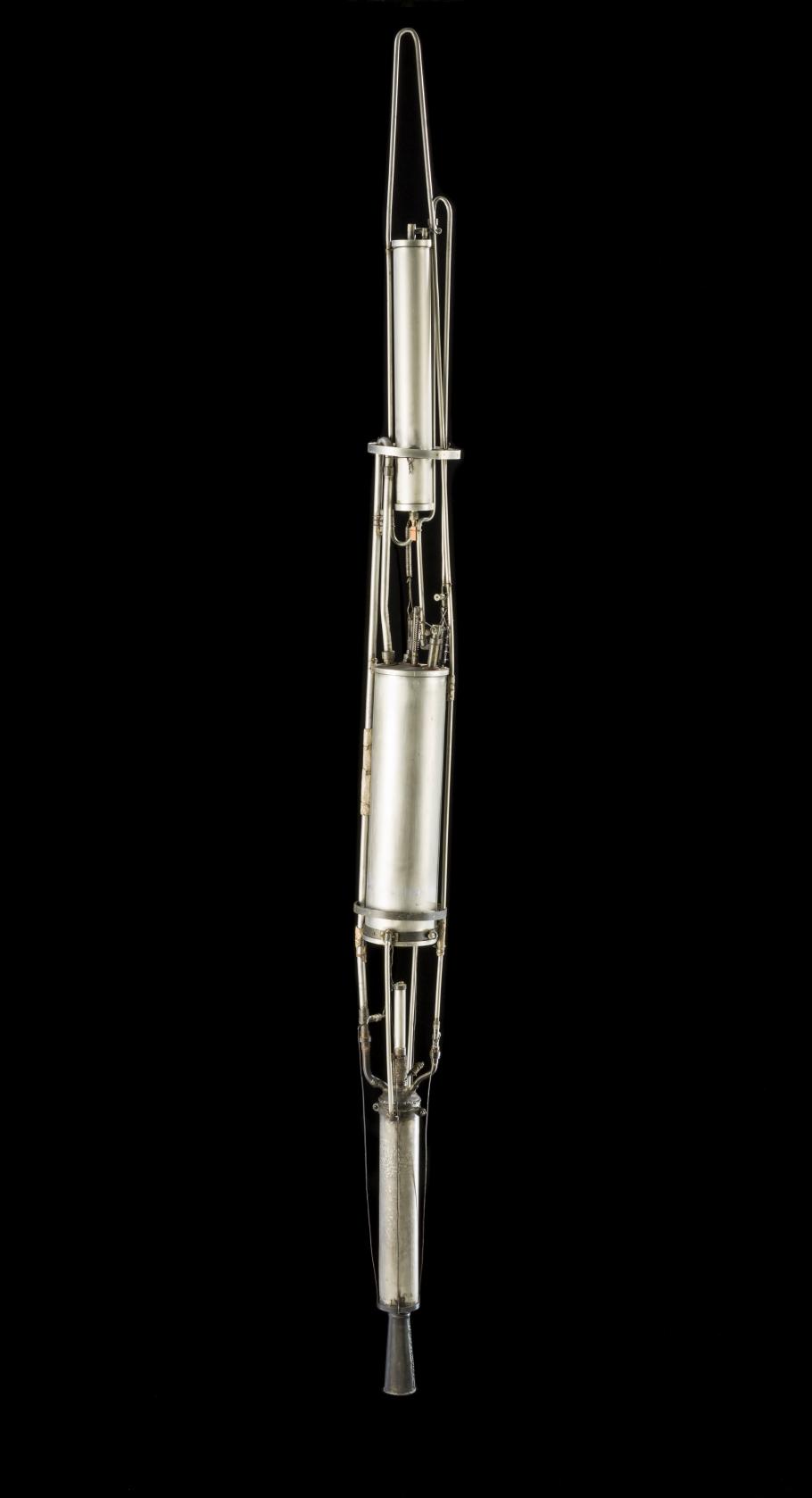This device is the oldest surviving liquid-propellant rocket in the world. It was designed and built by U.S. rocket experimenter Robert H. Goddard in Worcester, Massachusetts. It was Goddard's first in which the motor was placed at the base, instead of in the nose. He had used the latter configuration on the world’s first liquid-propellant rocket to fly, which he launched on 16 March 1926. The May rocket likely includes the nozzle from that historic vehicle. His attempt to launch his new rocket on 4 and 5 May 1926 was not successful, as it did not have enough thrust to lift itself.
The Daniel and Florence Guggenheim Foundation for the Promotion of Aeronautics gave this rocket to the Smithsonian in 1950.
Display Status
This object is not on display at the National Air and Space Museum. It is either on loan or in storage.
Object Details
Key Accomplishment(s)
Oldest Surviving Liquid-fueled Rocket
Brief Description
Space travel had been a dream for centuries, but it was not until the early 20th century when a practical method was first understood: rockets propelled by liquid fuel. Robert H. Goddard developed a theory of rocketry and tested the world's first liquid-fueled rockets.
Date
1926
Country of Origin
United States of America
Type
CRAFT-Missiles & Rockets
Manufacturer
Dr. Robert H. Goddard
Dimensions
Overall: 195.6 × 14cm (6 ft. 5 in. × 5 1/2 in.)
Materials
Aluminum alloy, steel, asbestos wrapping around pipes
Alternate Name
Goddard May 1926 Rocket
Inventory Number
A19850176000
Credit Line
Gift of Daniel & Florence Guggenheim Foundation
Data Source
National Air and Space Museum
Restrictions & Rights
Open Access (CCO)
For more information, visit the Smithsonians Terms of Use.









